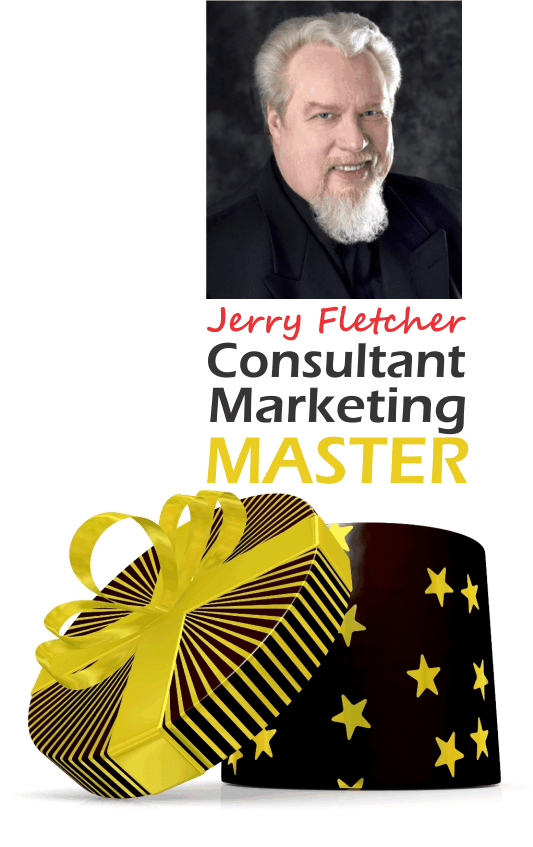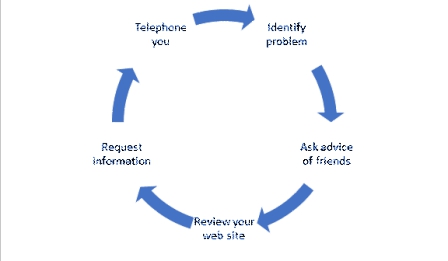
Yes, we live in a digital world.
Yes, every business needs some content to fulfill marketing needs.
Everything you need and nuthin’ you don’t.
There is no one size fits all. Each practice must build the content that will answer the questions prospects ask and maintain the contact over time. No two are the same. You and your clients are a different equation from all the others out there. It comes down to these functions:
- Starting a relationship
- Maintaining the connection
- Supporting Referral Sources
The start of something big.
Run the numbers. You’ll find that conversion rates for digital offers are at best 1 to 2%. Direct marketing using more traditional media may get you up to 5%. Networking because it is so personal can generate about 30% new contacts if you operate in the right circles. Speaking to an appropriate audience, if you understand how to reel people in from the podium, can range up to 70%.
No matter which approach you use, you first need to determine exactly who your best prospect is and learn what they want to know about the solutions you offer to their problems. You need to know how they define the job they want done and where they are in relation to that concern. You must also understand that you must be available to take their order when they are ready to buy.
The purchase journey is not a linear path. These days, because of the ease of access to all kinds of information sources the average buyer may move from broad information gathering to supplier specifics and back to more general information any number of times before making a purchase decision.
All you want to capture initially is:
- Name
- Smart Phone Number
I find that having a singular offer makes getting that information more efficient for you and prospects. I recommend offering what is commonly referred to as a “lead magnet” in the parlance of digital marketing. This will vary based on your business and that of your ideal clients. I find that Checklists, Worksheets and Quick Guides work best.
In digital situations I use a form to fill out on a landing page which grants a download to the e-mail given after the data is entered. The contact data is put into a CRM for further attention. I suggest that in Networking situations the item be mentioned as available and that the consultant will send it personally if the contact data is furnished. Usually a business card is exchanged. Speaking to a small group you can simply make the offer and ask for a card to be given to you to assure its delivery. With larger groups you need to have what I call a feedback card which is placed on every seat. The feedback card carries a way to write in contact information (and perhaps respond to a survey question or two) on one side and the same pitch you would use on a landing page on the other side.
Staying connected
Most of my clients connect with the C-suite, usually with the CEO. When I asked one what sort of content he wanted to receive he answered:
“Don’t give me stuff I’ve already seen in business publications. Give me the benefit of your thinking that is relevant to me. Be consistent. I appreciate it when information arrives at the same time each week and in the same form. That way when I get something out of the ordinary, I know it is important.
In a lot of consulting businesses (particularly financial) the industry sends out information quarterly at best. That is not good enough. In order to stay top of mind with a prospect, client or referral source you need to touch them at least once every four weeks. And more often is better.
That’s why I recommend a weekly contact of some sort. The best options are:
- Blog
- Video Blog
- Podcast
In addition, I recommend that high end consultants provide everyone on their e-mail list a Newsletter on a monthly basis. Based on feedback from their clients a recap of the weekly items provided is the best received. I’ve been told that it makes for a good way to provide staff with solid information quickly and to give other CEOs a quick way to get a fix on a consultant that might help them.
A Recommendation beats a Referral
A referral can be as simple as, “Here’s a number for someone that might help you.” These days, a notch up from that is the e-mail introduction. Both are helpful but a full-bore recommendation is more powerful.
A recommendation is when a person who knows you and your consulting capability invites you to a meal with a prospect and proceeds to sell your services over the meal. Done properly, all you do is take the order.
But in order to be able to do that, your recommender must know about your success and your failures. She or he must know how you have developed. The only way that can happen is if you consistently provide that information. That means you need to identify those Recommenders and Referrers and kept hm informed. One of the best ways I’ve seen is to continually change your e-mail signature to incorporate short outcome- oriented testimonials. It also helps to provide these known sources of new business with copies of your case histories as soon as they are issued.
Personalization of all the materials you send them will pay dividends.
And so it goes.

Jerry Fletcher is a sought-after International Speaker, a beBee ambassador, founder and CEO of Z-axis Marketing, Inc.
His consulting practice, founded in 1990, is known for on and off-line Trust-based Consultant Marketing and Brand development advice that builds businesses, careers and lives of joy.
Consulting:
www.JerryFletcher.com
Speaking: www.NetworkingNinja.com














